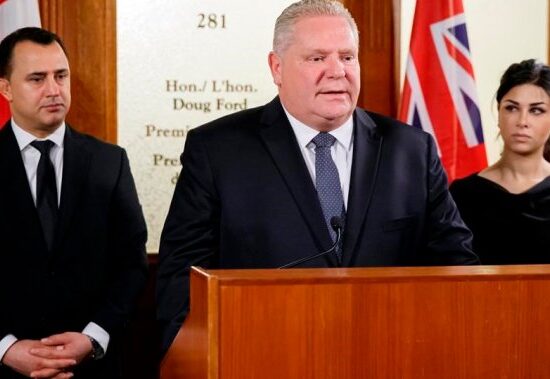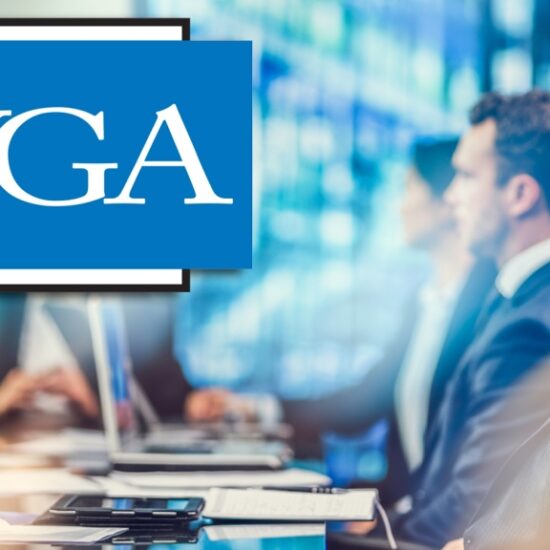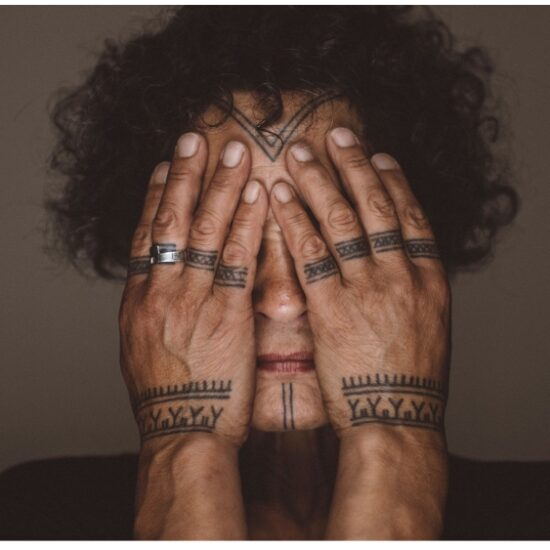
A Letter From Hajnal Molnar-Szakacs, Director of Artist Accelerator Program at Sundance Institute
Nonfiction storytellers and their work have been deeply impacted by recent world events, public health crises, and overdue reckonings. The impact on the field has been far-reaching and complex. This has manifested in various ways including the ongoing need to address sustainability, safety, and security, as well as a desire for holistic culture change to make the field more inclusive, accessible, and grounded in values-based ethics-first filmmaking practice.
Six years ago, Sundance Institute and IDA joined forces to launch the Documentary Core Application Project. The effort sought to create the Documentary Core Application Proposal Checklist which was a set of standardized proposal questions, terminology, and response lengths that funding and fiscal sponsorship organizations could incorporate into their existing application processes for nonfiction funding and fiscal sponsorship applications. As drivers of culture, champions of filmmakers, and institutions that seek to ensure that nonfiction storytelling will thrive, we recognized the need for the Core Application Proposal Checklist to be part of this evolution. This reflection will further the difficult questions that our field is engaging with. With this in mind, we regrouped with the IDA to re-engage with the field in a dialogue around the Documentary Core Application Proposal Checklist to ensure that the culture shifts, market forces, and collective movements are reflected in the questions asked in the Proposal Checklist.
In 2021 we held virtual conversations that brought together over 150 individuals from our field representing:
1) Independent filmmakers (directors and producers)
2) Collectives and filmmaker support networks
3) Artist support organizations interested in using the Core Application
4) Funding organizations and fiscal sponsors actively using the Core Application
With tremendous insights and contributions from the field, we are thrilled to share the new Nonfiction Core Application Proposal Checklist v. 2022, with an updated logo and webpage! We are committed to maintaining a process that revises the Nonfiction Core Proposal Checklist regularly, building out resources for filmmakers to support their applications, and for artist support organizations to more successfully implement its adoption.
Below are some key learnings and how these are reflected in the new core:
- We heard that the field is deeply committed to the Documentary Core Application Proposal Checklist. As a community of artist support organizations, we want to continue to alleviate the burden of documentary proposal writing, while still maintaining the integrity of the process of selections through a thorough application. Filmmakers also expressed the importance of the Documentary Core Application Proposal Checklist in their workflows.
- The new Core Application Proposal Checklist provides an exhaustive set of questions that artist support organizations may use. The questions funders choose to ask from the Proposal Checklist are at the discretion of the funder. Not every question must be utilized.
- We heard that much of the language in the original Core Application Proposal Checklist (using film school terminology) is colonial and rooted in western traditional storytelling styles that create barriers to entry and access. There is a need to simplify and clarify the language so first-time filmmakers and creators who are not native-English language speakers are able to be equally considered alongside film school graduates and experienced filmmakers.
- The Nonfiction Core Application seeks to use language that is accessible and translatable. In addition to the changes in the language used, over the coming months, we will be developing a glossary of key terms, to provide definitions and additional context for applicants.
- A Spanish language translation of the Core Application is available for applicants who prefer to engage with the questions in Spanish. Currently, most funders do not have the resources to accept applications in a language other than English, however, we hope to move in that direction as a field.
- Additionally, as we work to decolonize the form, we took care to review the language used in the Core Application to ensure that it is free of colonial references and assumptions.
- We also took great care to expand the language to be more inclusive of alternative forms of nonfiction (i.e nonlinear and non-narrative) signaling the expansion of the understanding of story and narrative. The expansion of the form is also reflected in the adoption of a new name — Nonfiction Core Application Proposal Checklist.
- The Core Application Proposal Checklist should support the advancement of the field and conversations around values-based filmmaking practices.
- We understand that the rules of filmmaking are being rewritten and documentary filmmakers are at the forefront of this change as they adopt a value-based approach to their productions. This approach assigns deeper value to the community, collaboration, and relationships based on trust, integrity, and partnership. The new Core Application Proposal Checklist aims to address this culture change through a couple of questions including:
- Power and Positionality — As the Documentary Accountability Working Group states, “Regardless of the power you possess in your daily life based on your own intersectional identity when you pick up a camera you wield power.” This question on the Core Application aims to provide the space for filmmakers to reflect upon the perspective with which they approach their topic, uncovering the experiences and preconceptions that shape their approach and understanding of the work.
- Connection and Access — seeks to not only understand the connection that a filmmaker has to their story but how this access and connection singularly positions them to tell the story. The Documentary Accountability Working Group invites filmmakers to ask themselves the following reflective questions: “access does not equal insight, does the filmmaker have trusted relationships with people with lived experience or other knowledge holders that will enable deep insight into the story.”
- Accountability — looks to understand the process the filmmaker undertakes to ensure they are engaging the participants or/and communities in their film in a responsible, respectful and dignified manner. Filmmakers should be able to define what their processes of accountability are and ensure that these are adhered to throughout the production. Additionally, we hope this prompt supports building positive relationships between the film team and their participants, so as to ensure that the participants and communities involved in the project have agency over their stories and their portrayal on screen. As funders, we also acknowledge that not all films have the same level of partnership between the filmmaking team and the participants or the communities on screen. A filmmaker should acknowledge this dynamic when necessary for the integrity of the film and provide transparency around their filmmaking process with participants while seeking informed consent, even if the filmmaking process is not a completely collaborative endeavor.
- Community Care and Safety — the responsibility of a filmmaker is great. They must ensure the mental, physical, and emotional well-being of their participants and team in an environment that is increasingly more risky and fraught. Recognizing potential risks or negative implications of telling a story can provide filmmakers with the tools to mitigate and manage issues before they arise. We recommend filmmakers reference the Safe + Secure Handbook developed by Doc Society and the Center for Media and Social Impact’s Dangerous Documentaries: Reducing Risk when Telling Truth to Power to help filmmakers identify and mitigate the risks they expose themselves, their participants, and their teams.
- The field has been engaged with these issues over the last couple of years and we encourage filmmakers to reference the guiding values outlined by The Documentary Accountability Working Group to build a more ethical and accountable filmmaking practice as well as the work coming out of StoryShift a program of Working Films that is committed to changing the way stories are told to ensure accountability to and authentic representation of the people and places featured in documentary films.
- We understand that the rules of filmmaking are being rewritten and documentary filmmakers are at the forefront of this change as they adopt a value-based approach to their productions. This approach assigns deeper value to the community, collaboration, and relationships based on trust, integrity, and partnership. The new Core Application Proposal Checklist aims to address this culture change through a couple of questions including:
- We acknowledge the need to interrogate and further accessibility throughout the Core Application process.
- The new Core Application Proposal Checklist urges funders to provide artists who require accommodations or support through the submission process with an alternative means (video or audio) of applying and offering applicants a contact method to facilitate their applications.
- The new Core Application Proposal Checklist encourages filmmakers to discuss their plans to ensure the project is inclusive and accessible from production through distribution. We encourage filmmakers to reference the Toolkit for Inclusion & Accessibility: Changing the Narrative of Disability in Documentary Film developed by FWD-Doc.
- Accessibility-related costs (captions, audio descriptions, and other required accessibility items) are required to be included in submitted budgets.
- We are aware that submitting project samples often creates unnecessary stress for filmmakers. Standardized sample lengths across funders could reduce financial and human capital burden.
- New recommendations in the Nonfiction Core Application encourage greater flexibility from funders in the visual materials they accept and greater clarity in what funders hope to see in each category.
- Word counts, paragraphs, and page lengths need to be standardized across the field.
- Word counts are used throughout the Core Application to determine maximum response length, not a minimum or even a suggested length. We encourage all funders to adopt these maximum submission lengths, however, we recognize that submission platforms have varying technical requirements and may not accept word counts to determine length limits. To translate word count to character count, we suggest the following:
- 100 words = 650 characters
- Word counts are used throughout the Core Application to determine maximum response length, not a minimum or even a suggested length. We encourage all funders to adopt these maximum submission lengths, however, we recognize that submission platforms have varying technical requirements and may not accept word counts to determine length limits. To translate word count to character count, we suggest the following:
It has taken a village to get us here. I’m incredibly grateful to our partners at IDA, as well as Dana Merwin and Kenny Brown, the over 150 individuals who shared their knowledge and experience over the past two years, and the small but mighty working group who took those insights into the final iteration of the new Documentary Core Application: Rahi Hasan (Co-founder, Undocumented Filmmakers Collective and independent filmmaker), Molly Murphy (Director of Partnerships and Innovation, Working Films), Maria Fortiz-Morse (Director, Producer, DP) and Megan Gelstein (Co-Director, Catapult Film Fund). If you are interested in being a part of this work, please send Hajnal Molnar-Szakacs, Director, Artist Accelerator Programs an email.
Thank you again to everyone who has thus far joined the effort, we look forward to what is to come.
Hajnal Molnar-Szakacs, Director of Artist Accelerator, Sundance Institute.














